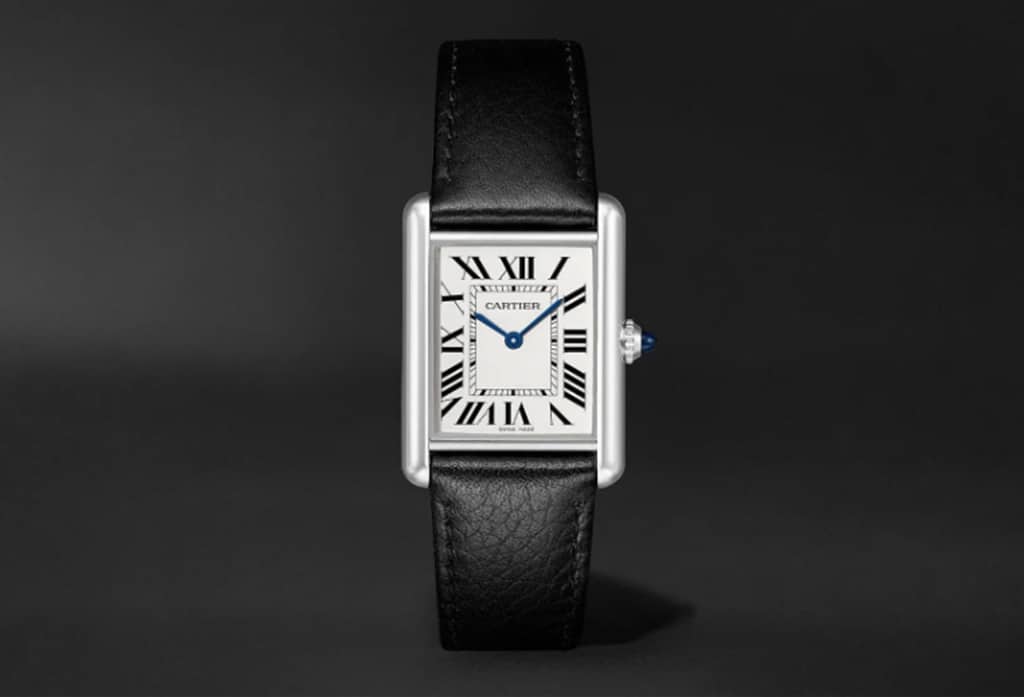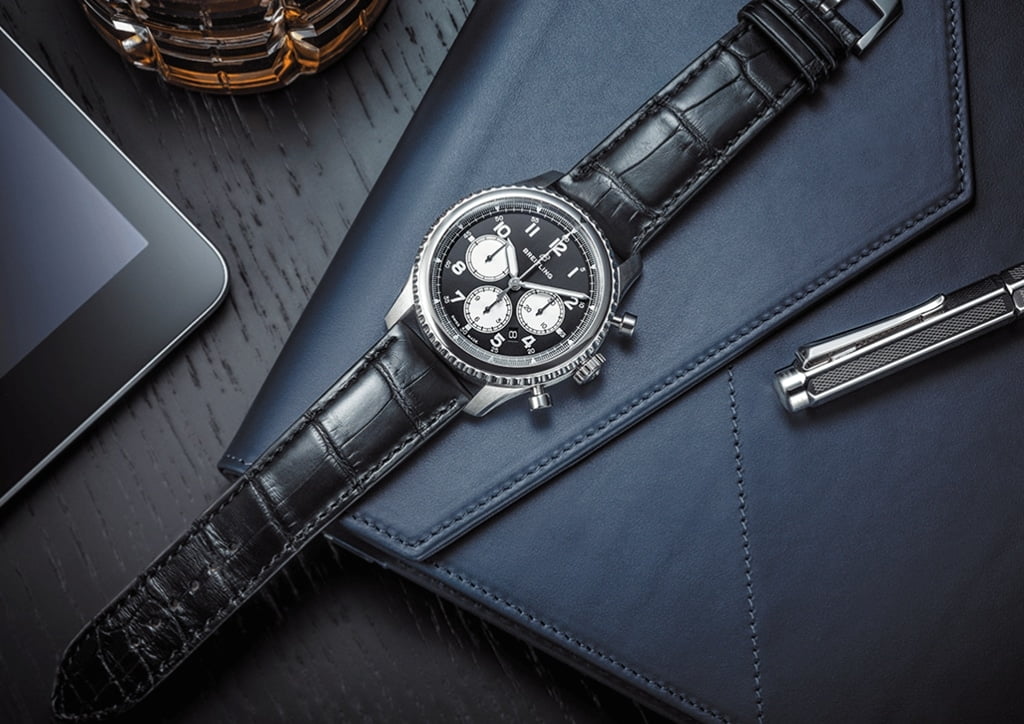Watch Buying Guide: What to Know Before Buying a Watch
A new watch is an exciting purchase, and you want to make sure you get the perfect watch for you through the watch buying guide. Buying a new watch can be daunting but embrace this as an exciting adventure. There are a lot of factors to consider and a lot of tricks to watch out for. Below is the ultimate watch buying guide to help you find the watch you want.
Budget
Before you even start looking at watches, you should decide how much you want to spend on your new watch. How important is having a fine watch to you? What features are you willing to compromise on in order to find a watch in your budget? How much you spend depends on your budget and what you’re looking for in a watch. Watches, like cars, have vast differences in prices thanks to materials, the technology within, the amount of hand-craftsmanship, and the rarity or exclusivity of the piece.

Brand
For some people, having a certain watch brand name may be important.
If you are willing to spend a good amount of money on a watch, you may want to consider whether getting a watch of a certain brand name is important to you. If it is, shop around to make sure you get exactly what you want.

Watch Buying Guide – Design
A major decision in buying a watch is the design. Watches come in every shape, size, and color imaginable, so it’s a matter of deciding what kind of look you want. Do you prefer bold or sleek, elegant or glamorous?
You do want to make sure that you get a watch that will fit in well with your everyday wardrobe. If your closet is filled with bright colors, bold patterns, and daring accessories, getting a watch that makes more of a statement may work for you. If, however, your style tends to run a little more reserved, you should pick a watch that will be subtle and elegant.

Watch Buying Guide – Function
You also need to decide what functions you want your watch to have. Much like the design and materials, there are watch functions to suit every need. From divers’ watches to military watches to sports watches to smartwatches, you can take your pick of features.
The Different Watch Types
- The Diving Watch. Designed to function in the ocean’s depths, the diving watch is, unsurprisingly, built for divers. Most diving watches owe their design cues to the 1953 Rolex Submariner: the first of its kind to work at a depth of 100m.
- The Dress Watch. The ideal dress watch is super-thin so it can rest unnoticed under the wearer’s cuff until he needs it. Also, as dress watches don’t perform any specific function bar telling the time, they’re also the most likely to be made from precious metal.
- The Pilot’s Watch. When Cartier first developed a watch for pilot Alberto Santos Dumont in 1911, aviation watches took off, and remain in flight to this today. That’s because it’s a perfect balance of technicality (multiple dials essential for dispensing large amounts of information to a pilot) and classic touches, with some models taking cues from pieces that are over 100 years old.
- The Driving Watch. Motorsports and watches have a very close working relationship. Driving watches should have a chronograph complication and a ‘tachymeter’ on the bezel.

Decide if the Materials Matter
One of the other big decisions you’ll need to make is what material you want your watch to be made of. Depending on the look you want to go for, you’ll need to decide among a number of materials. You also want to make sure that the material of the watch you choose is of the highest quality. Platinum and gold are noble metals that have often been in high demand. However, stainless steel watches are a great alternative, especially for everyday wear watches. Similarly, titanium offers options especially if you are looking for a sporty watch because the material is lighter in weight than steel and more scratch-resistant, as well as hypoallergenic. Other lightweight case materials include high-tech carbon fiber, ceramic and other alloys. In fact, some of today’s top brands are turning to all sorts of high-tech alloys and proprietary materials to make watches more durable, lighter in weight, and unique. It is important to note that the type of material the case is made of will definitely influence the price of the watch.

Watch Buying Guide – Movement
A movement is what makes a watch ‘go.’ When deciding which movement is right for you, Watch movements can also be mechanical or automatic. Both of these movements use a coiled spring and a variety of gears to keep accurate time, though the automatic movement winds itself using the motion of the hands. Each movement has its pros and cons, and you should decide which one you prefer before selecting a watch. some factors to consider are the level of precision and maintenance costs involved.
- Manual and automatic movements both fall under the umbrella of “mechanical” movements, which are made up of only mechanical parts, like gears and springs. Most collectors and connoisseurs prefer manual or automatic watches as these movements represent the accumulation of over 600 years of refinement, expertise, and craftsmanship.
- Quartz is typically the most accurate type of movement. Low in maintenance costs, these watches use a battery as their power source. They require periodic battery changes, complimentary for the lifetime of a watch purchased at Tourneau, and typically only need full servicing every 10-12 years. Many high-quality watches these days use a quartz movement since clockmakers in the nineteenth century discovered that a vibrating piece of quartz can keep time accurately. The quartz wristwatch movement kicked off in the 1970s, and it has been a popular choice ever since.

Buy from Someone You Trust
Lastly, and perhaps most importantly when buying a watch on the internet, you should make sure to buy from someone you can trust.
When buying online, you should look for an authorized dealer for a brand or a quality boutique site. Make sure they have some sort of money-back guarantee and research their reviews.

Personal Preferences and Tastes
You need to be true to yourself. Don’t buy a watch because someone else is encouraging you toward a specific model, buy what you like.
Today’s watches boast beautiful dial colors that range from red to blue, green, and everything in between. Other things to consider are the size of the watch you want, and even the shape. While round is classically traditional, top watch brands offer vintage-inspired tonneau (barrel) cases, rectangles, square, cushion (TV) shapes and so much more.

Purpose of Wear
A watch must be purchased with its intended use in mind. After helping many customers identify a watch to purchase, we have broken down the intended uses into three categories.
- Active wear: This means the watch will be used and abused. Swimming, golfing, showering, camping, doing yard work, etc. This type of person never takes off his watch – no matter what he is doing. Fortunately, there are several watches out there for such an active individual.
- Normal daily wear: A daily wearer typically wears his watch to work (light activity) and places his watch on the dresser when going to bed. The watch is removed when performing activities like swimming, outside work, and other commanding activities.
- Formal dress occasions: This is the type of watch that is typically stored in a safe until a special event or occasion demands its presence. Such a watch is not intended to endure arduous tasks.
Custom leather watch bands for watch brands include Audemars Piguet, Blancpain, Breguet, Bvlgari, Breitling, Cartier, Chopard, Corum, Franck Muller, Glashutte, Graham, Hamilton, Hermes, Hublot, IWC, Jaeger LeCoultre, Omega, Oris, Panerai, Patek Philippe, Piaget, Rado, Richard Mille, Rolex, Tudor, Ulysse Nardin, Vacheron Constantin, Zenith and more watches watch bands & straps.
Please check your watch to make sure the band fits before choosing one. If you need help, please email us pictures of your watch and old strap at Drwatchstrap and we will be happy to help!
